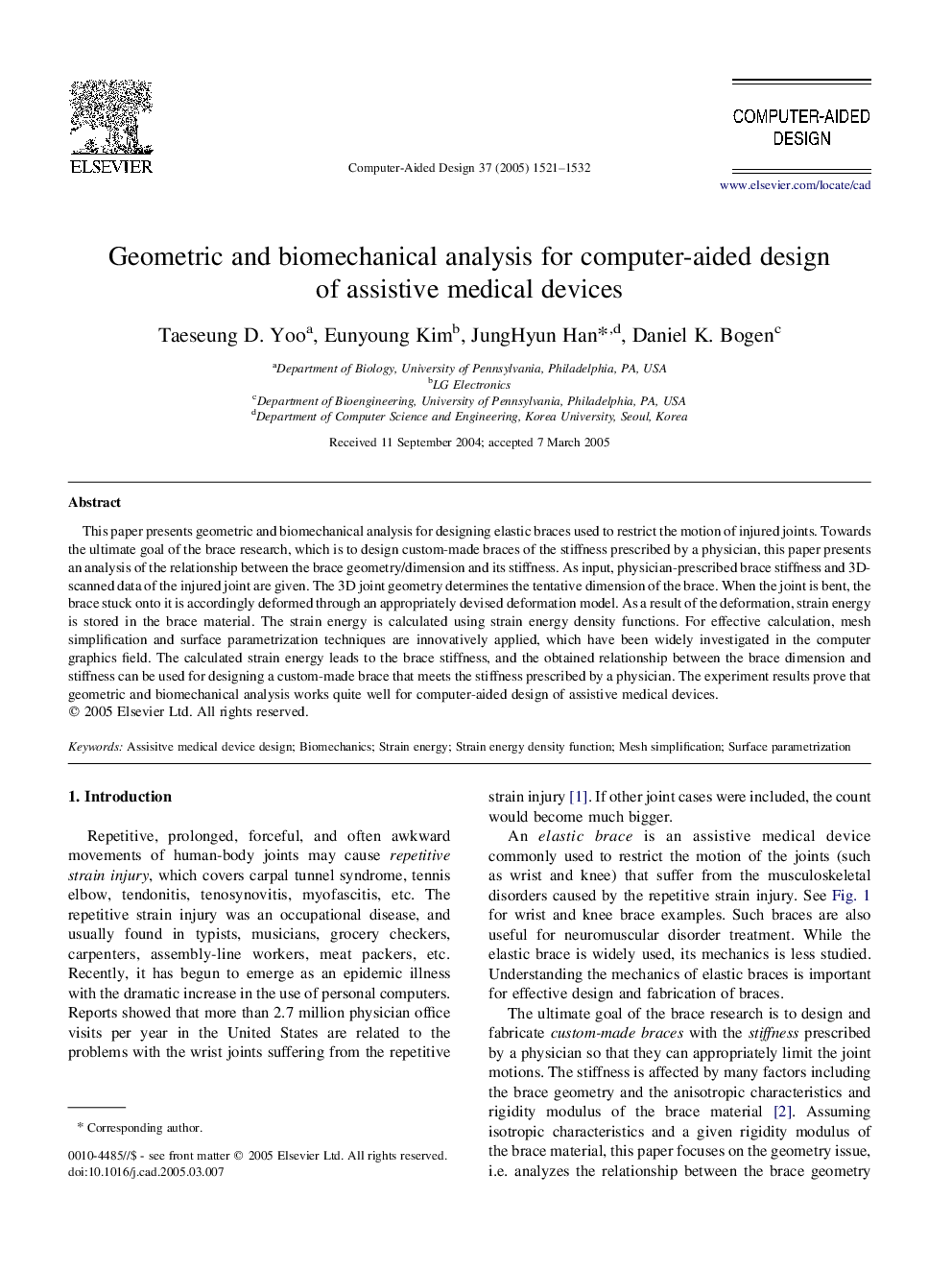| Article ID | Journal | Published Year | Pages | File Type |
|---|---|---|---|---|
| 10335240 | Computer-Aided Design | 2005 | 12 Pages |
Abstract
This paper presents geometric and biomechanical analysis for designing elastic braces used to restrict the motion of injured joints. Towards the ultimate goal of the brace research, which is to design custom-made braces of the stiffness prescribed by a physician, this paper presents an analysis of the relationship between the brace geometry/dimension and its stiffness. As input, physician-prescribed brace stiffness and 3D-scanned data of the injured joint are given. The 3D joint geometry determines the tentative dimension of the brace. When the joint is bent, the brace stuck onto it is accordingly deformed through an appropriately devised deformation model. As a result of the deformation, strain energy is stored in the brace material. The strain energy is calculated using strain energy density functions. For effective calculation, mesh simplification and surface parametrization techniques are innovatively applied, which have been widely investigated in the computer graphics field. The calculated strain energy leads to the brace stiffness, and the obtained relationship between the brace dimension and stiffness can be used for designing a custom-made brace that meets the stiffness prescribed by a physician. The experiment results prove that geometric and biomechanical analysis works quite well for computer-aided design of assistive medical devices.
Keywords
Related Topics
Physical Sciences and Engineering
Computer Science
Computer Graphics and Computer-Aided Design
Authors
Taeseung D. Yoo, Eunyoung Kim, JungHyun Han, Daniel K. Bogen,
